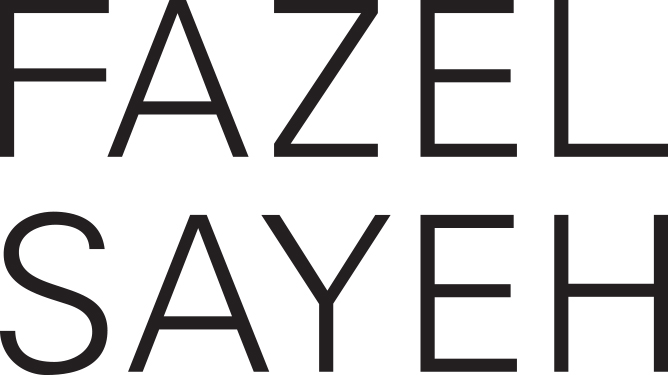How a Persian Geometric Pattern
Can Transfer Into a Western Visual Language?
ArtCenter College of Design | Grad Thesis | 2018 | Pasadena - CA
I found that complex geometric compositions do not quickly reveal how they were made; the outcome is visible but not the creative process leading to it. However, these patterns can be made without mathematical calculations. With just a pair of compasses and a ruler, you can draw circles and straight lines. These two simple elements are fundamental to all geometric compositions.
A pattern emerges when a unit is used in repetition. Repetition creates harmony; harmony creates unity, and unity is the ultimate purpose of the pattern. The study of geometric proportions has its roots in the study of nature and matter. Many forms observed in nature can be related to geometry — for example, the snowflake crystals.
Or Flowers in nature tend to have a variety of geometrics, although their range seems to be infinite. There are plants and another aspect of nature which exhibit the form of spiraling geometry, which is related to Fibonacci proportions based on the Golden Ratio. Thus the golden ratio is the fingerprint of the Universe, and this idea inspired me to name my project “AALAM,” which is a Persian word that translates into The Universe.
After a more profound study of this shape and see how that is designed, I found a unique form that is made up of eight squares.
To understand the form and its gestures, I found three iconic structures in different cities of Iran to show how
this pattern has been living in a real structure.
Tomb of Hafez in Shiraz | Rebuilt in 20th Century | Hafez, was an 14th century Iranian poet.
Left: Shah Mosque, Isfahan, Iran | 15th-16th Century - Right: Tomb of Baba Tahir in Hamedan | Rebuilt in 20th Century | Baba Tahir, was an 11th century Iranian poet.
But, how can this unit influences or inspires a western visual language?
This pattern, although it is only a simple two-dimensional shape, also seems three-dimensional. To clarify the three-dimensional aspect of this shape, I added grayscale into the form to highlight all the possible variations that could be created based on the original pattern.
So I came up with 100 shapes, which is a sacred number in Iran.
Here are the 100 shapes which designed base on that pattern.
This use of dimensionality reforms the initial flat pattern to a set of almost jewel-like objects.
And during this study, I realized it is also possible to create letterforms.
The T was the first character, and the other alphabet came after this.
And here is the outcome, which was genuinely unexpected at the beginning.
As I mentioned earlier, a pattern emerges when a unit is using in repetition, and when they are all together, they create a harmony, and harmony creates unity and unity is the ultimate purpose of the pattern. This philosophy always reminds me of a poem of Saadi,
an Iranian Poet in the 12th century who says:
We are part of the whole,
in the creation of a soul.
If one part is bothered with pain,
other parts uneasy will remain.
To display this humanistic idea and to present the new visual language system, I wanted to reinterpret something that we usually associate with Persian culture. I got one carpet digitally woven 6'x9' with a hidden message into it, which says: WE ARE PART OF THE WHOLE.
But how can this visual language influence and inspire other applications? In this project, I’ve attempted to demonstrate these patterns flexibility by applying it to the exterior surface of two iconic Western structure building, Art Center College of design, and Disney Hall.
Here is what I envisioned for ArtCenter. Every time that train passes by, patterns will appear and animate around the building.
And in Walt Disney Concert Hall,
The idea was to show how the building broadcasts a confluence of art and cultures. In this example, I imagined the Tehran symphony orchestra has a performance of one of the Philip glass piece named Glassworks.And this is how Disney hall advertises this show.
A prototype of the idea.
New Talent Annual 2019 | Gold Winner | Graphis























